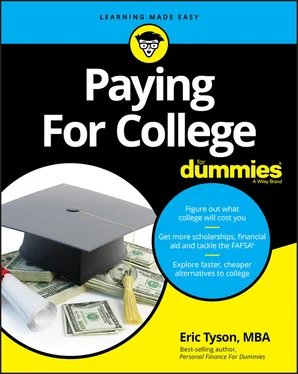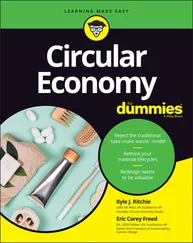Of course, different students have different schedules. Those college students who must work a fair number of hours to afford their college education are particularly busy. So too are those who have a demanding major and courses (e.g. pre-meds, engineering majors), participate in time intensive extras like a varsity sport, performing arts, etc.
In generations past, employers advertised job openings and applicants submitted paper-based resumes usually by mailing it (through the US Postal Service, that is). My how times have changed! Today, the hiring process is dramatically different as job openings are generally posted online which makes it easy for hundreds (or even thousands) of applicants to quickly and efficiently apply for a desired job. That creates a different type of sorting problem for employers which is why the vast majority of them utilize applicant tracking systems to screen resumes and manage the hiring process. To do well with those systems, job applicants should understand how to match desired keywords in their resume from the job description. It can also help to have a personal contact or recommendation at an employer an applicant desires to work for. Networking with alums of your college can help and that can be part of the “value” that is derived by graduating from a particular college.
According to CompTIA, an information technology industry association, the most significant technology skill gaps are in areas like artificial intelligence, automation, integration of apps, data and platforms, cloud infrastructure and apps, digital business transformation, cybersecurity, software or app development, and data management and data analytics.
Ryan Craig notes that increasing numbers of students who recognize the disconnect between impractical course offerings that don’t connect to real world jobs are double majoring. They are doings so as a way of hedging their risks and hopefully increasing their future employment chances and options.
What does Craig see that employers are looking for? “Most experts agree that a combination of technical skills and soft skills is the sweet spot in the labor market…By soft or noncognitive skills, I’m referring to fundamental capabilities such as teamwork, communication, organization, creativity, adaptability, and punctuality. In a LinkedIn study of hiring managers, 59 percent said soft skills were difficult to find and this skill gap was limiting their productivity.”
So, what are employers doing about this unhappiness? Several things according to Craig:
Refraining at times from hiring. Higher skill jobs may go unfilled.
Degree inflation. Requiring master’s degrees when a bachelors would do before or requiring a college degree when only a high school diploma was previously required.
Experience inflation. Requiring more work experience.
Jettisoning degree requirements. Some employers (e.g. Google, IBM) have removed degree requirements from some entry level positions or evaluate candidates regardless of whether they have particular degrees. Some employers are instead looking for micro-credentials from providers like Credly or e-Portfolios from Portfolium.
 As you and your teenager evaluate colleges (and other post-high school options), it’s well worth keeping in mind the total package of what employers are looking for. Remember the soft skills that employers say they are looking for — teamwork, communication, organization, creativity, adaptability, and punctuality, and so on. Consider how well potential colleges and other programs hone those attributes in your son or daughter.
As you and your teenager evaluate colleges (and other post-high school options), it’s well worth keeping in mind the total package of what employers are looking for. Remember the soft skills that employers say they are looking for — teamwork, communication, organization, creativity, adaptability, and punctuality, and so on. Consider how well potential colleges and other programs hone those attributes in your son or daughter.
Looking at How the Higher Education Landscape is Changing
Those who have spent time on college campuses either as students or as a place of employment know that they are places where change is generally slow to happen. A good part of this is because unlike companies operating in the private sector, colleges are insulated from many (but by no means all) the forces of competition.
Change is happening and will continue and the good news for you the college consumer is that these changes should provide more and better choices. And by better I mean those that don’t cost so darn much and take so darn much time!
In this section, I highlight changes that are happening now and likely to continue in the years ahead.
College enrollment is declining
In fact, college enrollment has now declined for eight straight years and has dropped nearly 10 percent. This has pressured some of less-selective colleges financially and actually led to some closing their doors (see next section).
Beyond the most highly selective colleges, increasingly, colleges are having to compete more for students and that’s a good trend for you. It’s leading to pressure on college pricing and better overall pricing at some colleges.
Of course, enrollment isn’t down at all schools and certainly isn’t at the most selective schools out there. Some of those schools, which have seen greatly increased numbers of applications over the years and decades, especially with increases in U.S. population as well as more overseas applicants, have expanded their enrollment a bit. Yale recently added two new residential colleges, which enabled the college to boost undergraduate enrollment from 5,400 to 6,200. Princeton increased their enrollment from 4,700 to 5,700. In recent years, a number of other leading colleges including Babson College and Johns Hopkins University have similarly expanded their enrollment.
Some colleges are failing and closing
Unless it’s a school near you or that you have some personal connection with, you likely haven’t noticed the significant increase in colleges closing their doors and colleges cutting their prices.
Colleges are competing for a shrinking pool of students. There are more spots available on college campuses than there are students available and willing to pay the high price of attendance. Thus, some schools are struggling financially, and some are going under and closing their operations and campuses. The following table lists private non-profit colleges that have closed just in the past several years.
Private non-profit colleges that have closed just since 2016:
| College Name |
Location |
Prior Enrollment |
| Atlantic Union College |
Lancaster, MA |
500 |
| Burlington College |
Burlington, VT |
245 |
| College of New Rochelle |
New Rochelle, NY |
2900 |
| Concordia College (Alabama) |
Selma, AL |
600 |
| Crossroads College |
Rochester, MN |
185 |
| Dowling College |
Oakdale, NY |
6750 |
| Grace University |
Omaha, NE |
480 |
| Marylhurst University |
Marylhurst, OR |
1900 |
| Green Mountain College |
Poultney, VT |
775 |
| Marygrove College |
Detroit, MI |
1850 |
| Memphis College of Art |
Memphis, TN |
380 |
| Morthland College |
West Frankfort, IL |
400 |
| Mount Ida College |
Newton, MA |
1500 |
| Newbury College |
Brookline, MA |
1280 |
| Oregon College of Art and Craft |
Portland, OR |
140 |
| St. Catharine College (Kentucky) |
Springfield, KY |
750 |
| Saint Joseph's College (Indiana) |
Rensselaer, IN |
1100 |
| St. Gregory's University |
Shawnee, OK |
690 |
| Southern Vermont College |
Bennington, VT |
360 |
| Trinity Lutheran College |
Everett, WA |
300 |
 Of course, you wouldn’t want your child to choose a college only to see that school shutter especially while your kid is in attendance. So, you should investigate the financial health of colleges you’re considering. Historically, this was difficult and time consuming to do. But, no longer thanks to Forbes. You can find their most recent “College Financial Health Grades” at
Of course, you wouldn’t want your child to choose a college only to see that school shutter especially while your kid is in attendance. So, you should investigate the financial health of colleges you’re considering. Historically, this was difficult and time consuming to do. But, no longer thanks to Forbes. You can find their most recent “College Financial Health Grades” at
Читать дальше

 As you and your teenager evaluate colleges (and other post-high school options), it’s well worth keeping in mind the total package of what employers are looking for. Remember the soft skills that employers say they are looking for — teamwork, communication, organization, creativity, adaptability, and punctuality, and so on. Consider how well potential colleges and other programs hone those attributes in your son or daughter.
As you and your teenager evaluate colleges (and other post-high school options), it’s well worth keeping in mind the total package of what employers are looking for. Remember the soft skills that employers say they are looking for — teamwork, communication, organization, creativity, adaptability, and punctuality, and so on. Consider how well potential colleges and other programs hone those attributes in your son or daughter. Of course, you wouldn’t want your child to choose a college only to see that school shutter especially while your kid is in attendance. So, you should investigate the financial health of colleges you’re considering. Historically, this was difficult and time consuming to do. But, no longer thanks to Forbes. You can find their most recent “College Financial Health Grades” at
Of course, you wouldn’t want your child to choose a college only to see that school shutter especially while your kid is in attendance. So, you should investigate the financial health of colleges you’re considering. Historically, this was difficult and time consuming to do. But, no longer thanks to Forbes. You can find their most recent “College Financial Health Grades” at










